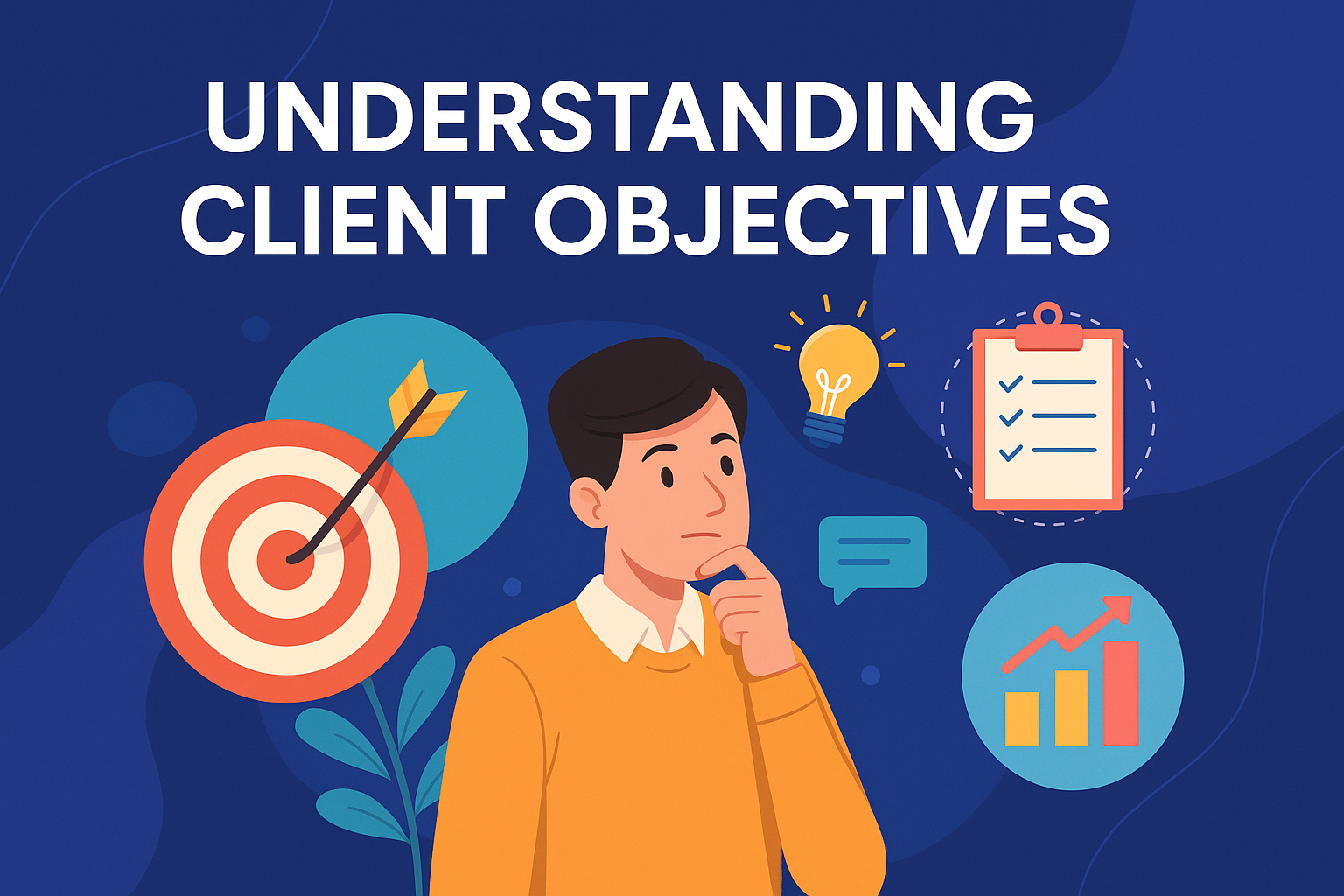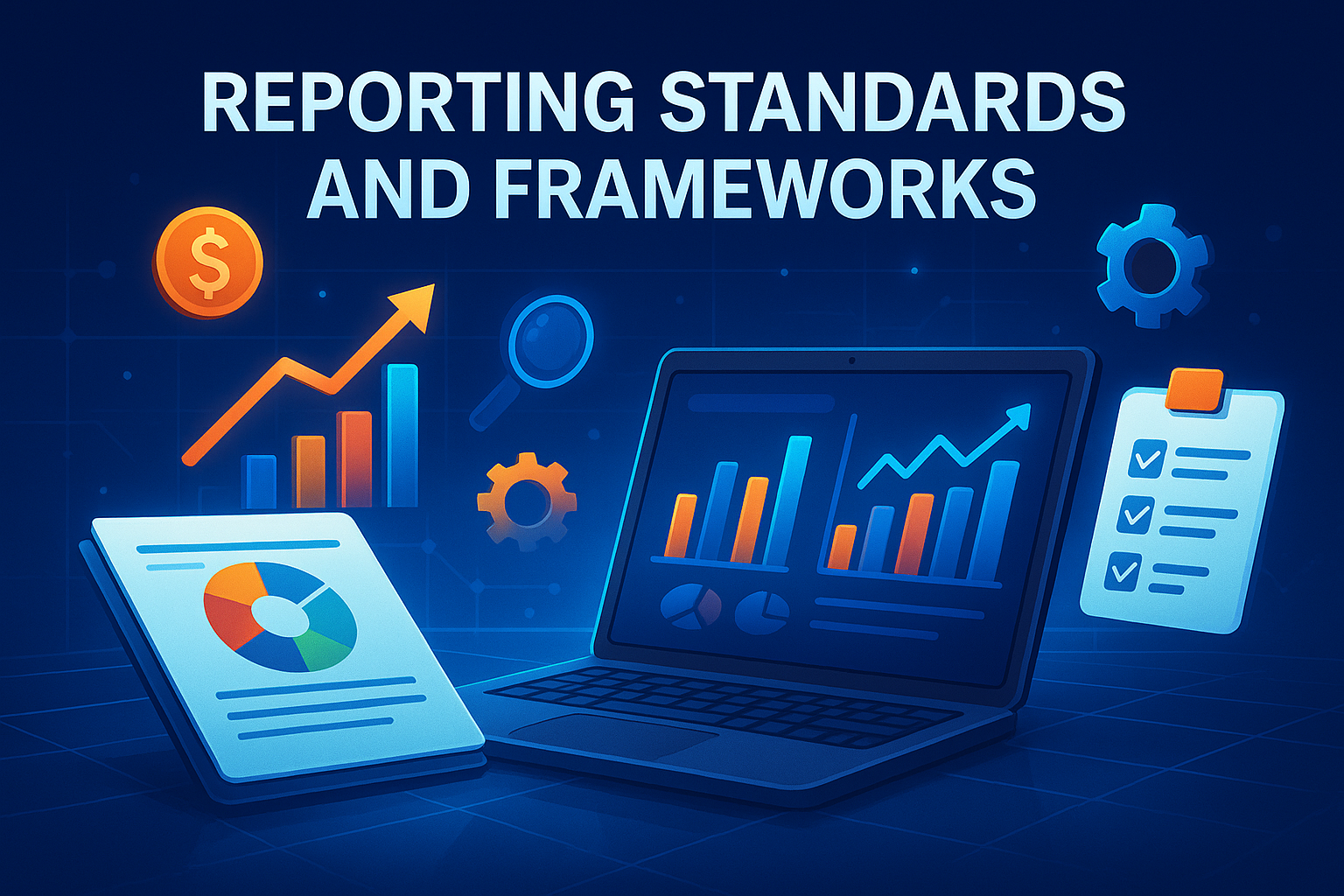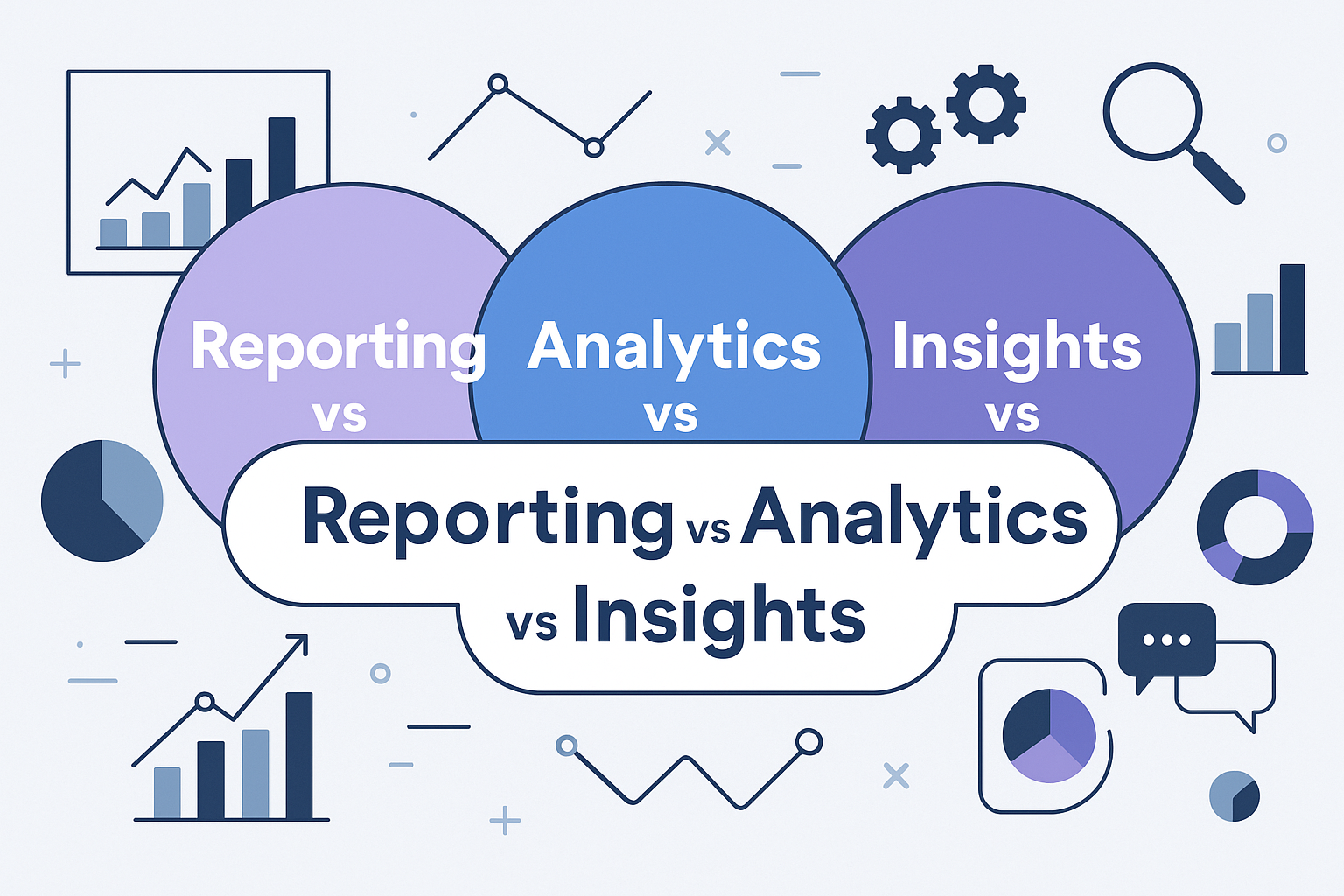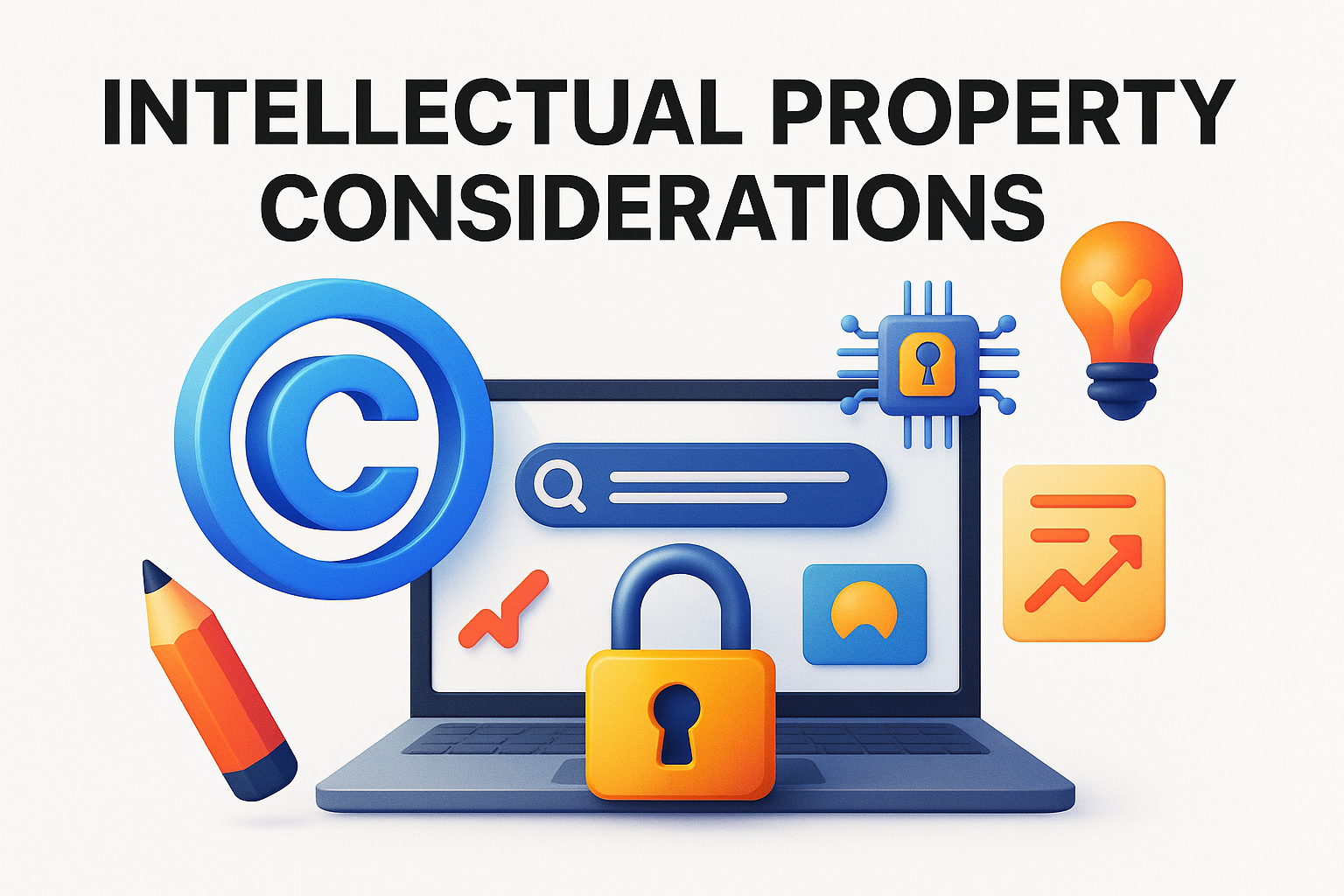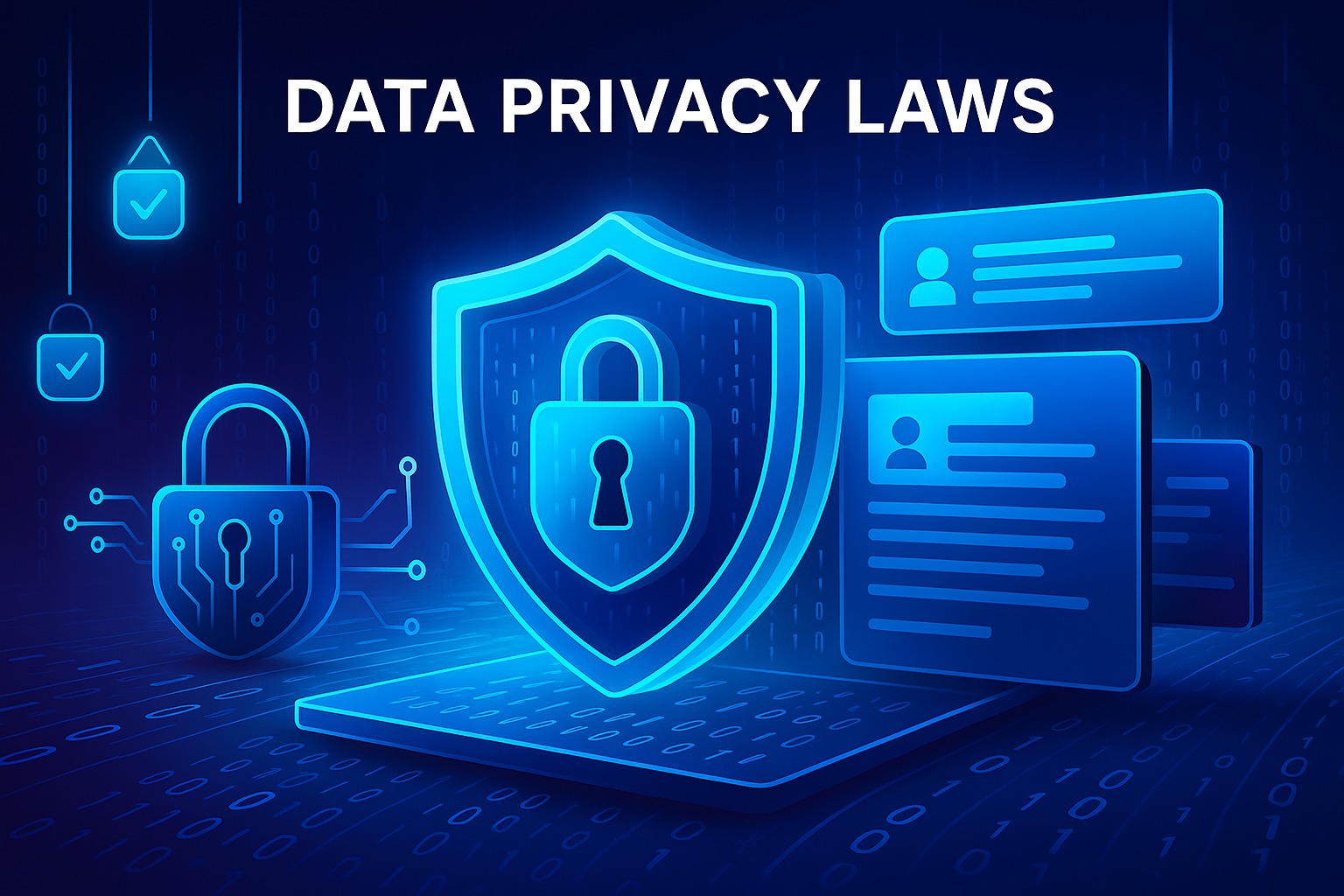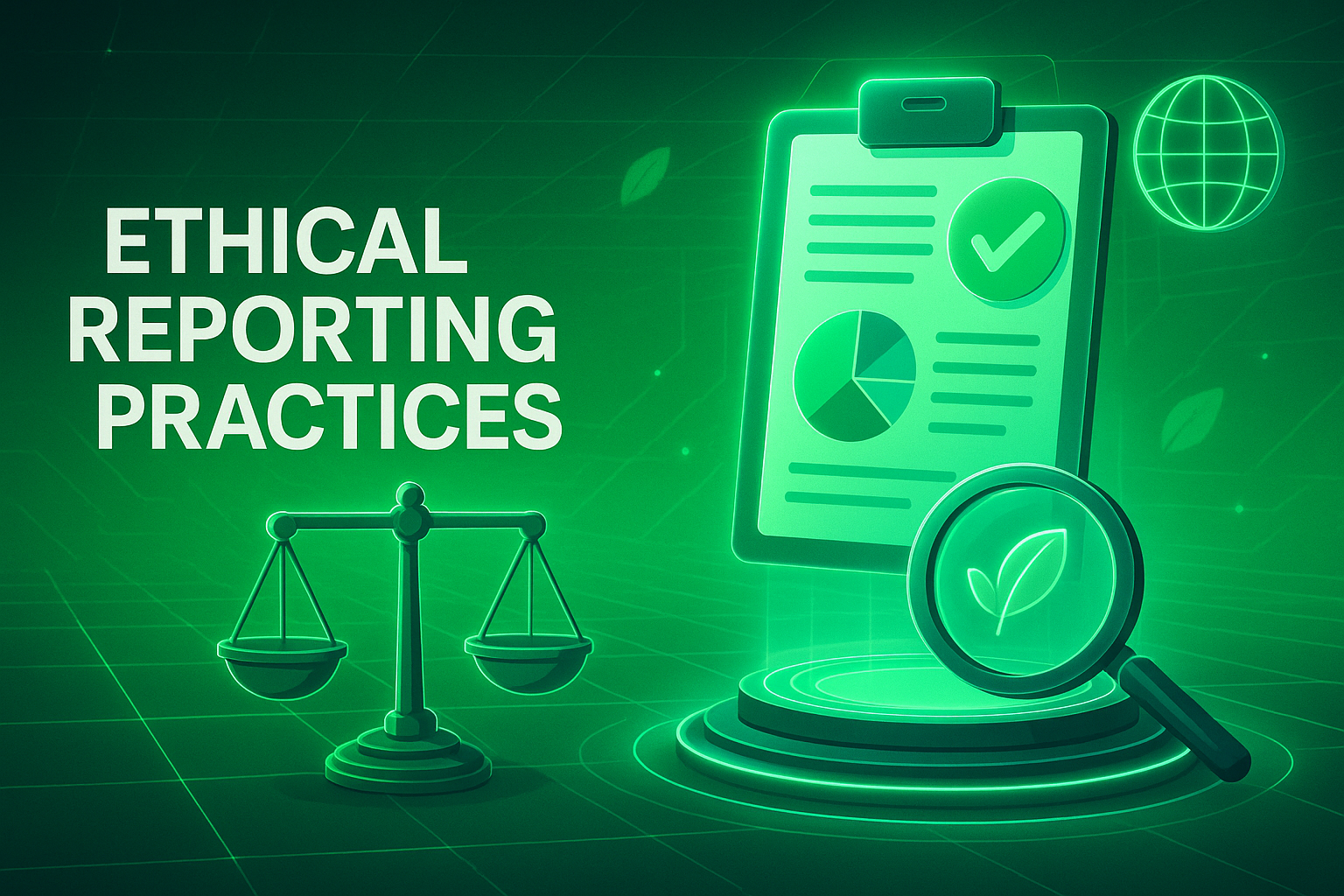Understanding Client Objectives in Reporting
Key Takeaways
-
Dig deeper than your client’s stated goals by seeking out unstated objectives, hidden stakeholders, and measures that actually define client success for more resonant project results.
-
Always have open discussions and listen for hidden motivations, evolving priorities, and internal dynamics that may be impacting client objectives.
-
Align performance and KPIs with real business impact, leveraging data and frequent reporting to monitor progress and demonstrate value.
-
Promote collaboration by having all stakeholders participate in co-creation sessions, with their needs and points of view incorporated.
-
Record conversations and approach in detail, and be flexible to evolving client needs throughout the partnership.
-
Foster confidence and set expectations with honesty, frequent input, and continuous reflection on historical performance and the market.
Every successful project starts with one simple question: What does the client really want to achieve? Whether it’s a campaign, a product launch, or a new service rollout, clear objectives set the tone for everything that follows.
When you and your team understand those goals, it’s much easier to pick the right approach, outline the right tasks, and track progress in a way that actually matters. It also means you’re not just “doing the work”, you’re showing clients real results that tie back to what they care about most.
For marketing agencies and SaaS teams, this isn’t just about strategy; it’s about building trust and keeping partnerships strong over time.
In the sections ahead, we’ll walk through practical steps and tools you can use to better understand client objectives and turn them into wins for both you and your clients.
Why Surface-Level Goals Fail
Surface-level goals may appear transparent initially, but they commonly overlook what really counts for clients. When goals don’t align with a client’s real values or true needs, the effect can be ephemeral. Surface-level projects can stall, deliver shallow engagement, and leave teams perplexed.

Understanding why these surface-level goals fall short assists agencies and teams in going beneath the surface and cultivating deeper connections.
The Unspoken Goal
Clients often ask for obvious things like more leads, sales, or revenue, but what they really want can go deeper, like recognition at work or more free time with family. These unspoken goals don’t always come out directly, which is why listening carefully, asking open questions, and checking in regularly is so important. When you understand those hidden needs, you can deliver strategies that truly make clients happy, not just look good on paper.
The Misaligned Metric
Not every metric works for every project. With the right measure, you can waste your effort and miss your target. A client may request more web traffic, but if their primary objective is brand trust, those raw numbers won’t tell the story of actual progress.
To align metrics with what matters, begin with the client’s overarching objective, then select measures that align.

Just like in the illustration above, for example, if your objective is long-term customer loyalty, measuring return visits or time spent engaged is more important than measuring new clicks.
So, here are the common pitfalls in metric selection:
-
Tracking vanity metrics, such as followers, that aren’t tied to an objective.
-
Using industry standards that don’t fit the client’s business.
-
Disregarding qualitative feedback in favor of easy-to-measure statistics.
-
Failing to revisit metrics as goals change.
A clear framework helps: first, define the client’s core goal; second, agree on what success looks like; third, pick measures that capture both; and finally, revisit them frequently.
The Hidden Stakeholder
Others craft a project on the fly. They might not attend meetings, but they exert influence, such as finance personnel who sanction budgets or a quiet partner with opinions. Mapping everyone who matters, not just those who shout, is essential.
Once identified, these stakeholders must be listened to. This can translate into one-on-one calls or customized updates. If their needs are missed, projects can stall or drift without warning.

Looping in all voices prevents surprises. It makes the client team feel important. Open channels, such as shared dashboards or progress emails, keep everyone informed and minimize miscommunication.
A Framework for Understanding Client Objectives

A good client objective framework gets at all those layers — cognitive, emotional, physical, sensorial, and social. Each client’s objectives represent a combination of life experiences and relationships in flux, molded by each individual’s past and specific requirements.
By outlining these objectives, companies can tie their products or services to the lives and ambitions of their clients on a personal level, creating greater relevance and value for offerings.
1. Uncover Business Impact
So, to begin to understand the impact of client objectives, try focusing on outcomes that are important to the business. For a retailer, this might translate to more repeat buyers or a higher average order value.

Collaborating with clients to identify these areas of impact frequently pinpoints what fuels their achievement, and from there, it’s more straightforward to craft metrics that are defined and actionable.
Metrics like churn rate, net promoter score, or monthly active users make it easy to associate goals with business health.
2. Define The Audience

See the illustration. This approach ensures messaging that suits each segment, not just the overall market.
Then conduct user research through interviews or surveys that uncover what is important to each segment.
Personas are next.

Make each one specific, for example:
-
A 45-year-old, busy parent in a city
-
A 24-year-old professional ballet dancer
-
A 65-year-old veteran looking for a community home
With this, strategies shift from sweeping conjectures to practical, grounded action plans. Snappy campaigns targeted to each group raise your chances of connecting with the right folks.
3. Align Strategic Fit
Determine if the client’s goals align with your team’s strengths. If not, jot down those missing pieces. Perhaps you need additional data tools or a new skill.
Work out a schedule that defines the stages, so both parties have some idea of what to expect. Cross-team meetings keep us all on the same page and prevent wasted effort.
4. Isolate Key Messages
Turn vague goals into concise, pointed statements. Each should correspond to a need or value the audience group holds. Try these out with some stakeholders ahead of a launch to identify confusion or misdirection.
Collect feedback, polish the language, and ensure each message is clear. Tweak as you go so your messaging always resonates.
5. Validate With Data
Deploy analytics to support goals and tactics. Draw insight from both numbers and narratives. Statistics reveal trends, and words provide nuance.
Reports that mix these two assist clients in recognizing the big picture and directing next steps. Data allows you to monitor progress, course correct, and keep everyone in the loop.
You can leverage client reporting tools like KPI.me to help you share the insights you gather to your team.

The Psychology of Client Needs
Understanding what drives clients goes beyond logic or numbers. Emotions, personal values, and even social pressures often shape their decisions. When you tap into these deeper motivations, you can create solutions that feel more personal and meaningful.

Clients often look for reassurance, recognition, or simply to feel heard. That’s why empathy and self-awareness are so valuable. By picking up on tone, body language, and even what’s left unsaid, you can uncover needs they may never spell out. This kind of awareness helps you build trust while avoiding unnecessary conflicts.
Navigating Internal Politics
Every organization has its own internal politics. Here are some examples:
-
Budgets
-
Decision-makers
-
Hidden influencers
They can all affect a project more than you realize. Knowing who really drives decisions behind the scenes helps you avoid roadblocks later on.
The key is to engage not just the loudest voices, but also the quieter stakeholders who still hold influence. Building rapport across departments ensures your solutions fit the bigger picture and move forward smoothly.
Translate Objectives Into Reports
Translating client objectives into crisp reports requires a plan. These reports should scale to each client’s needs, demonstrate progress, and allow clients to easily view how their objectives are monitored. Shifting targets, new issues, or successes all mean that reports must be viewed and updated regularly.

A regular interval of reporting lets clients anticipate when reports are due, reducing uncertainty or repeated inquiries. Too many at once will get confusing, so a small number of achievement-oriented objectives keeps things focused and reporting more valuable.
Like this, for example:

You can try doing weekly, bi-weekly, or monthly.
You can also refer to this table to see what type of reports you can do:
|
Type of Report |
Main Use |
Key Features |
|---|---|---|
|
KPI Report |
Track progress on set goals |
Focuses on main metrics, actionable insights |
|
Progress Snapshot |
Show milestone updates and status |
Quick visuals, highlights achievements |
|
Incident Report |
Log issues, risks, or delays |
Details problems, triggers resolutions |
|
Executive Summary |
High-level overview for decision-makers |
Simple, concise, only key findings |
From Goal To KPI
Begin with the client’s objective, e.g., increase online sales, brand awareness, or lead generation. Break these down into reportable KPIs. For example, an online store could have the objective to increase sales by 10% in three months.
The corresponding KPIs might be:
-
Site visits
-
Cart adds
-
Average order value
A KPI tree makes it easier to visualize how these goals divide into specific actions and measures.
Don’t try to define too many KPIs at once. Choose the ones that count so you all keep your eye on the ball.
Narrative Over Numbers

Data without more narrative is not sufficient. Since most clients are not data geeks, reports need to tell a story. Tell them in plain language what the numbers mean for their business.
For example, a report might say: “Your click-through rate rose 15%, leading to higher site visits and more sales.” Illustrate successes via reports across the objectives. Tell stories that demonstrate how the changes helped the client.
For example, “Here’s a campaign that attracted new buyers.” Combine concise reports with brief, real-world case studies. This makes it easier for everyone to visualize not only what happened but why it matters. Mixing in hard data and real results is important.
Conclusion
To know what clients desire, begin with open conversations and attentive hearing. Don’t assume. Inquire about their desires, their suffering, and their insomnia. Replace big words with real talk. Demonstrate every step with straight facts and hard numbers, not just optimism. Personalize every report to their style, not yours. Pull them into the mix early and often. Keep discussions open after the initial encounter. Use reporting that tells a story, not just a pile of numbers.
Remember, it’s people you’re seeing, not brands. The finest work derives from that genuine connection. For quick, slick reports that hold everyone’s attention on what matters, give KPI.me a visit and find what clicks for your team or agency.
Frequently Asked Questions
Why is it important to look beyond surface-level client goals?
Chicken scratch goals frequently overlook deeper needs; understanding effective client management goals allows you to offer solutions that enhance customer satisfaction and meet client expectations.
What framework helps to understand client objectives?
A framework might still have open questions, active listening, and alignment on client management goals. This facilitates the discovery of genuine customer needs and expectations.
How do you turn client objectives into useful reports?
Convert client management goals into metrics. Utilize transparent visuals and information that ties results back to effective client management goals for simple tracking.
What is a co-creation session?
A co-creation session is a collaborative brainstorming meeting between clients and teams, ensuring effective client management goals by incorporating everyone’s vision and requirements into the action plan.
Why should you revisit client objectives after the initial brief?
Client needs may evolve, and effective client management goals help in revisiting objectives to keep your solutions in touch.
How does psychology affect client needs?
Clients are emotional and practical creatures; understanding their needs and concerns is key to effective client management goals, which helps earn their confidence.
What is the benefit of understanding client objectives for reporting?
Sharp objectives make reporting more actionable, helping to achieve effective client management goals. They assist in demonstrating your worth by connecting results directly to what is most important to the client.

